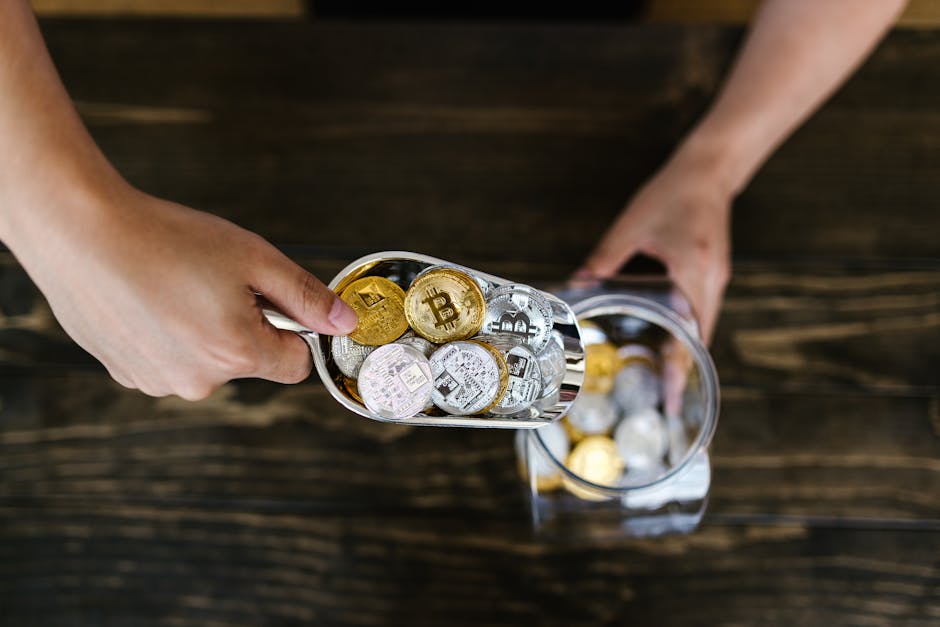Why Altcoins Deserve Your Attention
Bitcoin and Ethereum may dominate headlines, but the real action often lives in the altcoin market. From layer-1 challengers like Solana and Avalanche to utility-driven projects like Chainlink and Arweave, the altcoin space is stretching its legs. It’s a volatile, high-upside environment—brimming with new protocols, niche use cases, and some serious investor interest.
For the strategic investor, altcoins represent both opportunity and risk. Get in early on the right project and the returns can be massive. Miss the red flags or buy the hype, and it can just as easily swing to zero. Smart money isn’t betting blindly—it’s watching fundamentals, timing entries, and diversifying across sectors and blockchains.
Altcoins aren’t just speculation. They’re a way to balance out a crypto portfolio that leans too heavily on the majors. While Bitcoin holds the line and Ethereum builds the infrastructure, altcoins explore the edges—offering exposure to emerging sectors like decentralized storage, AI integration, privacy tech, and next-gen finance. If Bitcoin is your foundation, altcoins are your growth play—just make sure you’ve done the research.
Step 1: Understand the Utility, Not Just the Hype
Every altcoin promises the moon, but few actually build the rocket. The first step in spotting a real contender is asking one blunt question: what does this token actually do? If the answer is vague or buried in buzzwords like “decentralized innovation layer,” move on.
A solid project solves a clear, definable problem. Maybe it speeds up cross-border finance, improves data privacy, or enables smarter contracts for real-world use. The utility needs to go beyond hypotheticals. Look for traction—pilot programs, customer adoption, or integration with existing tools.
Whitepapers can read like sci-fi novels. Some projects look great on paper but offer zero value when it’s time to ship. Read whitepapers critically. Does the tech make sense? Are the timelines realistic? Is there a business case with actual demand? You’re not there to cheerlead. You’re there to assess risk and upside like any smart investor would.
Bottom line: if a token doesn’t solve a real problem today—or show a credible path to doing so—it probably belongs in the ‘no’ pile.
Step 2: Investigate the Team Behind the Project
Before throwing money at any altcoin, get to know the people building it. A strong founding team isn’t just a bonus—it’s the backbone. Look for a track record of real output: have these founders shipped working products before? Have they built or contributed to legit projects in tech, finance, or crypto? If you’re staring at anonymous profiles or LinkedIn pages that look like vapor, move on.
Project transparency is another filter. Are the devs sharing regular updates? Do they post roadmaps, publish GitHub progress, or communicate setbacks honestly? Radio silence after funding is a major red flag. On the flip side, projects worth your attention usually over-communicate.
And don’t skip community signals. A responsive, informed, and non-hype-driven community is tough to fake—and a strong one keeps founders accountable. Check Telegram, Discord, X, Reddit. Are questions getting thoughtful replies? Are the updates more than vague buzzwords? If the community feels real and voices seem informed rather than botted or blinded by moon talk, that’s a green light.
Step 3: Analyze Tokenomics
Tokenomics is where a lot of altcoin hype either holds up or quietly falls apart. First, get clear on the difference between total supply and circulating supply. A coin might have a total supply of 1 billion tokens, but if only 100 million are circulating, the rest could hit the market later—possibly flooding it. That kind of dilution can crush price momentum.
Next, look at whether the asset is inflationary or deflationary. Inflationary coins steadily release more tokens over time. That’s not always bad, but it requires value to grow in tandem to maintain buying power. Deflationary models, where tokens are burned or removed from circulation, can lead to long-term scarcity—but only if adoption keeps up.
Then come the incentives. Quality projects usually offer rewards for network participation—staking yields, governance votes, or unique distribution mechanisms. But not all incentives are equal. High staking APYs can look appealing, but sometimes they signal unsustainable economics. You want systems that encourage holding and contribution, not just chasing short-term gains.
Understand the mechanics. Be wary of surprises. Good tokenomics don’t just fuel growth—they help it last.
If you’re serious about altcoin investing, it’s not just about the whitepaper or hype cycles—it’s about backing projects that are building real traction. One of the biggest green flags? Institutional interest. When reputable players like Coinbase Ventures, Binance Labs, or established VCs get involved, it’s not a guarantee—but it’s a strong signal that the project has passed a decent level of technical and strategic scrutiny.
Another key factor is cross-chain compatibility. Altcoins that play well with others—think tokens that can bridge across Ethereum, Solana, or Cosmos—tend to stand the test of time better. Interoperability isn’t just a buzzword here; it’s a foundation for long-term use and open development.
And finally, look at the ecosystem. Is the network attracting developers? Are real apps or integrations being built? A high “transaction per second” claim means little if nobody’s building or using the system. Watch growth metrics like developer activity, GitHub commits, and active wallet addresses. Early momentum is one thing. Sustained traction is what separates a promising altcoin from a one-hit wonder.
Step 5: Study the Coin’s Technical Indicators
Picking altcoins without checking the data is like driving blindfolded. Start with three metrics: volume, liquidity, and volatility. Daily and weekly trading volume shows whether anyone’s actually buying or selling the coin. Low volume? That’s warning tape. Liquidity is just as crucial—without enough of it, you can’t get in or out of a trade without distorting the price. Watch the bid-ask spread; if it’s wide, brace yourself for slippage.
Volatility is double-edged. More price movement means more opportunity—but also higher risk. Look for patterns, not just spikes. Does this token surge with Bitcoin’s moves or dance to its own rhythm? Mapping the coin’s historical behavior across past market cycles offers insight. Has it pumped in bull runs? Did it tank harder than average during crypto winters? What’s the rebound record?
Use tools like CoinMarketCap, CoinGecko, or TradingView for tracking volume and charts. Set alerts with apps like Crypto Pro or CoinStats to catch sudden changes in price or volume. Keep it tight and stay informed; charts won’t predict miracles, but they do reveal habits. And in crypto, habits often repeat.
Step 6: Diversify and Time Your Entries Strategically
Building a smart altcoin portfolio isn’t just about picking the right coins—it’s also about knowing when and how much to invest. Timing, allocation, and emotional control all play vital roles in shaping long-term success in crypto investing.
Don’t Chase Pumps: Spot Grounded Opportunities Instead
Getting swept up in sudden price surges is one of the most common mistakes newer investors make.
Look for:
- Sustainable growth, not just hourly spikes
- Steady trading volume, indicating ongoing interest
- Fundamental drivers like new partnerships or key product releases
- Relative strength vs. the overall market
Tip: If you’re late to a rally, you’re often early to the drop. Wait for retracements and look for areas of strong support instead of buying at all-time highs.
Portfolio Sizing: Altcoins vs. Major Cryptos
Altcoins can offer high returns—but come with higher volatility. Your allocation should reflect your risk tolerance and overall strategy.
Suggested breakdowns (based on risk appetite):
- Conservative: 70% BTC/ETH, 30% altcoins
- Balanced: 50% BTC/ETH, 50% altcoins
- Aggressive: 30% BTC/ETH, 70% altcoins
Use altcoin exposure to tap into innovation, but don’t neglect the stability that major cryptos offer.
Entry and Exit Timing: Be Strategic, Not Emotional
You don’t have to buy everything at once—or sell in panic mode. Timing your trades increases your odds of success.
Watch for:
- Consolidation periods (when prices move sideways) before entering
- Overbought indicators (like RSI) when considering exits
- Fundamental shifts (positive or negative) in the project
- Major news events that could skew price action unpredictably
Having a plan matters:
- Set entry targets based on technical levels
- Use stop losses to protect capital
- Set profit targets—and stick to them
Altcoin investing pays off most when executed with patience and a game plan. The market rewards strategic consistency, not reactionary moves.
Step 7: Watch for Regulatory Trends and Market Sentiment
Regulations aren’t just background noise—they can be the difference between an altcoin’s moonshot or rug pull. When governments adjust crypto policy, it hits specific coins in different ways. Privacy-based tokens? Usually hit first. Utility tokens tied to real-world goods? Sometimes gain clarity, sometimes get stuck in legal limbo. Smart investors stay ahead by tracking which jurisdictions are tightening or loosening their stance. The SEC whispering about something today could mean a delisting wave tomorrow.
At the same time, social media and influencer buzz can drown out actual facts. One tweet from someone with a monkey profile picture shouldn’t dictate your portfolio moves. The hype is loud—but rarely consistent. Sensational charts and overpromises are common bait.
Instead, keep your footing with deliberate inputs. Follow regulatory news from credible sources. Tune into dev updates and actual documentation. Always step back and ask: would this project still matter if the hype turned off tomorrow? FOMO thrives when facts go unheard. Your edge is staying informed and keeping your emotions parked.
Regulatory signals matter. So does your ability to think two steps past the headline.
Additional Winner Moves
Before you drop funds into the next hot altcoin, lock in your process. Having a solid DYOR (Do Your Own Research) checklist keeps you grounded when things get noisy. Start simple: What’s the project’s actual utility? Who’s behind it? Are the tokenomics sustainable? Keep that list visible—don’t rely on memory when hype kicks in.
Too many people jump into coins because a Discord or Telegram room is buzzing. Big mistake. Find communities that prioritize analysis over moon talk. Look for project forums with consistent developer updates, honest critiques, and thoughtful discussion—places where skepticism is welcome. Steer clear of pump rooms. If everyone’s shouting but no one’s asking questions, walk away.
Also, set alerts and follow only official project channels. Whether it’s Twitter, Discord, or site blogs, getting info from the source helps cut through misinformation. False rumors move fast in crypto and can wreck smart decisions in seconds. Stay tuned in—but stay neutral until your checklist checks out.
Learn More Strategy
If you’re ready to take your crypto investing game further, it’s worth digging into more nuanced tactics beyond just picking coins. The fundamentals laid out so far—utility, team, tokenomics, timing—are essential. But how you apply them, how you stack strategies, and how you mentally approach the market all matter in the long run.
For a deeper dive into smart investing tactics, check out Top Strategies for Successful Cryptocurrency Investing. It covers structured approaches, risk management techniques, and mindset shifts that separate serious investors from impulsive gamblers. If you’re putting real capital into this space, it’s a read worth bookmarking.
Final Word: Be Patient, Be Disciplined
Altcoins are volatile by nature. One month you’re looking at a 10x gain, the next you’re holding onto something that’s dropped 80%. That’s not failure—it’s the terrain. The smart move isn’t chasing rockets but navigating with a map.
Falling in love with a project’s tech or vision too early is where a lot of people go wrong. Just because it sounds revolutionary doesn’t mean it will survive a bear market, a regulatory clampdown, or founder drama. Treat projects like they need to earn their place in your portfolio. Because they do.
Excitement feeds FOMO. But it’s not excitement that builds long-term returns—it’s patience and good habits. Follow the data. Build your own system. If you stay research-driven instead of emotionally reactive, you’re already ahead of most.
The reality? Big wins are possible, but only if you’re okay missing a few flashy plays in exchange for holding positions that actually make sense. Boring is underrated. Smart beats loud. Always has.


 Kevin Taylorainers played a key role in building Factor Crypto Edge, contributing his expertise in market research and content development. His efforts in gathering reliable data and analyzing industry movements have helped shape the platform into a trusted source for cryptocurrency insights, ensuring readers receive clear and accurate information.
Kevin Taylorainers played a key role in building Factor Crypto Edge, contributing his expertise in market research and content development. His efforts in gathering reliable data and analyzing industry movements have helped shape the platform into a trusted source for cryptocurrency insights, ensuring readers receive clear and accurate information.